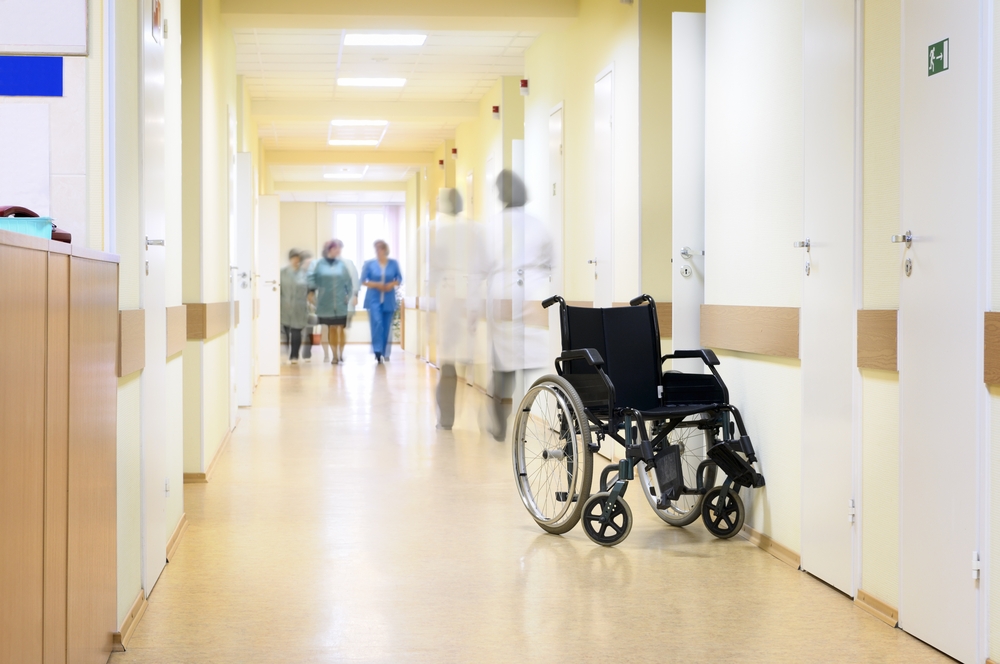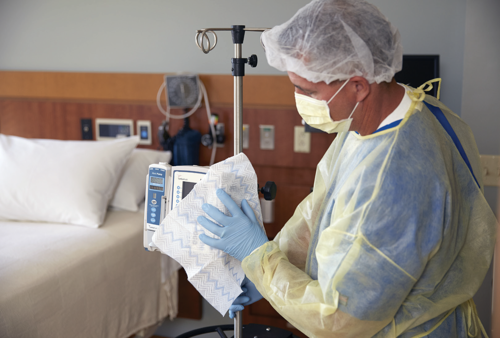
When patients are admitted to the hospital - whether they admit themselves or are taken there by loved ones - they have certain expectations. Chief of them all, they expect their illness or injury will be taken seriously and they'll receive the very best care the medical facility has to offer. They also rightly anticipate the facility will be fully clean, as numerous patients - with hundreds of different ailments - come into and out of the Australia's public and private health systems around the clock. This reality has many people inside and outside the medical industry wondering: How truly clean are the world's hospitals? More specifically, is it possible to get them even cleaner? The answer to this question may prove pivotal in preventing the coronavirus - and other harmful pathogens - from causing further harm to citizens' health - not to mention that of the world's economy.
HAIs remain an ongoing threat
Hospital-acquired infections (HAIs) have been around for generations and continue to remain a serious concern due to its prevalence. According to the World Health Organisation, hundreds of millions of patients throughout the world are impacted by HAIs every year. Due to a variety of factors, such as poor infrastructure, overcrowding and insufficient cleaning equipment, hospitals in developing nations tend to see more HAIs annually than do developed, with 10 in every 100 patients acquiring at least one such infection compared to seven patients in industrialised countries. While Australia may have a thriving economy relative to others in the world, HAIs remain an ongoing issue here. Indeed, according to a study published in the medical journal Infection, Disease & Health, roughly 165,000 HAIs occur every year, on average, in Australia alone. Perhaps inspired by these findings, Nick Graves, a professor of economics from the Australian Centre for Health Services Innovation at the Institute of Health and Biomedical Innovation, led a study that involved nearly a dozen hospitals throughout the country to see what cleaning practises were underway at these facilities and if certain reforms would lead to fewer HAIs incidences. "Its aim primarily was to investigate whether a change in cleaning practises was effective in reducing the 165,000 healthcare-associated infections in Australia each year," Graves explained, in a press release from Queensland University of Technology.
How the study worked
To better discover where the potential for HAI transmission lurked, Graves and his team used fluorescent marker technology that tracked where improperly cleaned surfaces existed. The markings also served as a means of determining whether problematic areas were sufficiently scrubbed down "The dots resist dry abrasion and are removed only by a thorough cleaning technique," Graves added. By the study's conclusion, Professor Graves REACH project - short for Researching Effective Approaches to Cleaning Hospitals - proved successful. He noted that participants in the analysis were able to diminish pathogen transferral by the depth and quality of surface cleaning, particularly in bathroom and bedroom areas of healthcare facilities. The REACH project was also effective in reducing the transmission rate of specific types of HAIs, such as vancomycin-resistance enterococci (VRE), falling 37%. VRE is not only immune to several antibiotics, but is highly communicable, capable of remaining on uncleaned surfaces long after they were first put there, usually by casual contact or grazing up against an object that was contaminated. The study was funded by Australia's National Health and Medical Research Council.

While hospitals may devote a significant amount of time, money and resources into keeping beds, floors and commonly touched surfaces as clean as they can possibly be, there's always room for improvement. The REACH study says any worthwhile hospital cleaning regimen involves five performance pillars:
From front-office staff, to orderlies to physicians and medical assistants, hospital workers must know and understand exactly what's required of them to keep a facility as hygienic as can be. This includes specific instruction on the types of solutions used and how to correctly utilise cleaning tools to better apply them, such as mops, rags and disposable wipes.
Technique goes hand in hand with training and is characterised by an ongoing sequence of decontaminating high-touch surfaces. Time, movement and pressure applied also factor into this pillar.
Staff should have a clear understanding of what cleaning products are best based on the environments they're decontaminating and ensure they follow the manufacturers' guidelines for usage.
Leadership must verify on an ongoing basis that rooms are being cleaned in accordance with outlines specified. Feedback should accompany these performance checks.
It's important for teams to remain in contact with one another so rooms, surfaces, linens and floors are adequately cleaned and maintained. Signage may also be ideal to notify patients and staff of areas that are properly sanitised and sterilised. Nothing is more important than your staff and patients' health and safety. No company has more experience in this regard than Rubbermaid. Empower your staff with our healthcare cleaning solutions today.